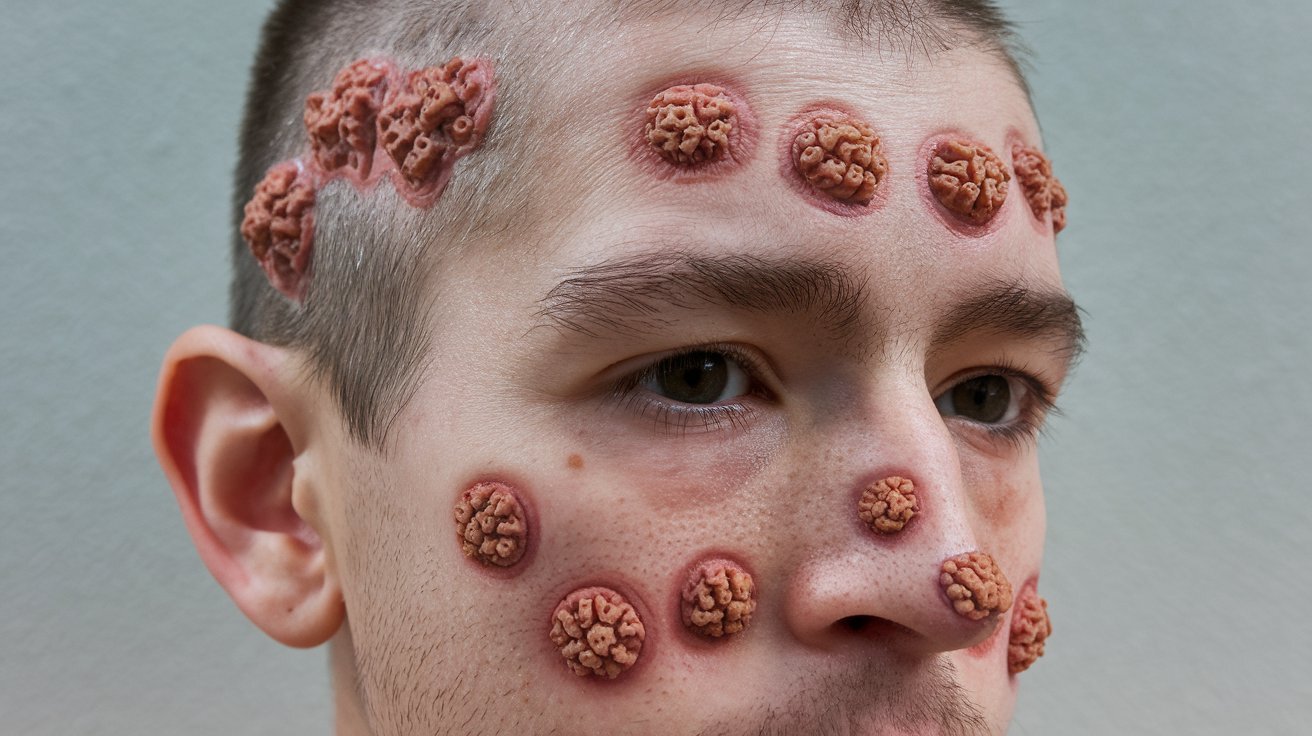
Graham-Little Syndrome is a rare skin disorder that can leave many puzzled. This condition, also known as Graham-Little-Piccardi-Lassueur syndrome, involves three main symptoms: scarring alopecia on the scalp, non-scarring hair loss in other areas, and a unique type of rash called lichenoid follicular papules. Understanding Graham-Little Syndrome is crucial for those affected, as it can significantly impact daily life. This blog post will provide 20 essential facts about this condition, helping you grasp its complexities. From symptoms to treatment options, you'll find everything you need to know about Graham-Little Syndrome right here.
What is Graham-Little Syndrome?
Graham-Little Syndrome is a rare skin condition that affects hair follicles and causes scarring. It can be quite challenging to diagnose due to its rarity and the similarity of its symptoms to other skin disorders. Here are some fascinating facts about this unusual condition.
-
Graham-Little Syndrome is also known as Graham-Little-Piccardi-Lassueur Syndrome. This name honors the three dermatologists who first described the condition.
-
It primarily affects middle-aged women. Although it can occur in men and younger individuals, it is most commonly seen in women between the ages of 30 and 60.
-
The syndrome is characterized by three main symptoms: scarring alopecia, non-scarring alopecia, and follicular lichen planus. These symptoms can appear simultaneously or sequentially.
-
Scarring alopecia leads to permanent hair loss. This occurs because the hair follicles are destroyed and replaced by scar tissue.
-
Non-scarring alopecia causes temporary hair loss. Unlike scarring alopecia, the hair follicles remain intact, allowing hair to potentially regrow.
-
Follicular lichen planus manifests as small, itchy bumps around hair follicles. These bumps can appear on the scalp, armpits, and groin area.
Causes and Diagnosis
Understanding the causes and how to diagnose Graham-Little Syndrome can help in managing the condition more effectively.
-
The exact cause of Graham-Little Syndrome is unknown. Researchers believe it may be related to an autoimmune response, where the body's immune system mistakenly attacks healthy hair follicles.
-
Diagnosis often involves a combination of clinical examination and biopsy. Dermatologists look for the characteristic symptoms and may take a small sample of skin to examine under a microscope.
-
Blood tests may be conducted to rule out other conditions. These tests help ensure that the symptoms are not caused by other autoimmune or inflammatory diseases.
-
Early diagnosis is crucial for managing symptoms. Prompt treatment can help reduce the severity of hair loss and skin lesions.
Treatment Options
While there is no cure for Graham-Little Syndrome, various treatments can help manage the symptoms and improve the quality of life for those affected.
-
Topical corticosteroids are often prescribed to reduce inflammation. These medications can help alleviate itching and redness associated with follicular lichen planus.
-
Oral corticosteroids may be used for more severe cases. These are typically prescribed for short periods to control acute flare-ups.
-
Immunosuppressive drugs can help manage the autoimmune response. Medications like methotrexate or cyclosporine may be used to reduce the activity of the immune system.
-
Antimalarial drugs, such as hydroxychloroquine, have shown some effectiveness. These medications can help reduce inflammation and slow the progression of hair loss.
-
Phototherapy, or light therapy, may be beneficial for some patients. This treatment involves exposing the skin to specific wavelengths of light to reduce inflammation and promote healing.
Living with Graham-Little Syndrome
Coping with a chronic condition like Graham-Little Syndrome can be challenging, but understanding and support can make a significant difference.
-
Regular follow-ups with a dermatologist are essential. Ongoing monitoring helps manage symptoms and adjust treatments as needed.
-
Support groups can provide emotional and practical support. Connecting with others who have the condition can help reduce feelings of isolation and provide valuable coping strategies.
-
Wigs and hairpieces can help those with significant hair loss. These can improve self-esteem and provide a sense of normalcy.
-
Healthy lifestyle choices can support overall well-being. A balanced diet, regular exercise, and stress management techniques can help improve the body's ability to cope with the condition.
-
Education and awareness are key to managing Graham-Little Syndrome. Understanding the condition and staying informed about new treatments and research can empower patients and their families.
Final Thoughts on Graham-Little Syndrome
Graham-Little Syndrome, though rare, impacts many lives. Understanding its symptoms, like scarring alopecia, keratosis pilaris, and lichen planus, helps in early diagnosis and better management. Treatment options, including topical steroids, oral medications, and light therapy, can alleviate symptoms but not cure the condition. Staying informed about the latest research and connecting with support groups can provide valuable resources and emotional support.
Remember, each patient's experience is unique, so personalized care is crucial. If you or someone you know shows signs of Graham-Little Syndrome, consult a healthcare professional for accurate diagnosis and treatment plans. Knowledge and awareness can make a significant difference in managing this condition effectively. Stay proactive, seek support, and never hesitate to ask questions about your health.
Was this page helpful?
Our commitment to delivering trustworthy and engaging content is at the heart of what we do. Each fact on our site is contributed by real users like you, bringing a wealth of diverse insights and information. To ensure the highest standards of accuracy and reliability, our dedicated editors meticulously review each submission. This process guarantees that the facts we share are not only fascinating but also credible. Trust in our commitment to quality and authenticity as you explore and learn with us.


